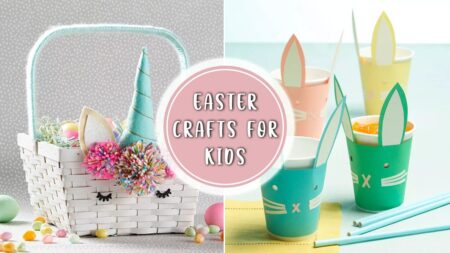When it comes to building your family’s dream home, creating spaces that cater to the needs of every family member is very important. For parents, striking a balance between aesthetics and functionality becomes even more crucial when it comes to designing spaces for children. A kid-friendly home design goes beyond vibrant colors and whimsical decor; it involves thoughtful planning to foster an environment that encourages both play and learning.
In this article, we will explore the key elements to consider when designing spaces for children, which are not only visually appealing but also promote their cognitive and physical development.
Versatile Furniture for Dynamic Space

The cornerstone of any kid-friendly home design lies in versatile and durable kids’ furniture. Opt for furnishings that can adapt to the changing needs of your child as they grow. Modular furniture, such as adjustable tables, chairs, and even cribs, allows easy customization according to age and activity. Investing in quality pieces that withstand the test of time ensures longevity and saves from frequent replacements.
Interactive Zones for Playful Learning

Designate specific areas within your home for interactive learning. Consider creating a cozy reading nook with a selection of age-appropriate books or a dedicated art corner equipped with easily accessible art supplies. These zones not only stimulate creativity but also instill love for learning from a young age. Incorporating educational posters or wall decals can transform the space into an immersive learning environment.
Childproofing Without Compromising Style

Child safety is the top priority in any kid-friendly home. Beyond traditional safety measures, such as securing cabinets and outlets, consider ways of seamlessly integrating safety features into your design. Rounded furniture and installing slip-resistant flooring can minimize the risk of accidents when kids are running amok around the house. Explore creative ways to incorporate safety gates or barriers that don’t disrupt the overall aesthetic of the space.
Storage Solutions to Tame Ever-Growing Toys

Every parent knows the struggle of managing an influx of toys. Designing a kid-friendly home involves implementing clever storage solutions to keep the clutter at bay. Incorporate built-in storage units with colorful bins and baskets, making it easy for children to organize and access their belongings independently. This not only teaches them responsibility but also contributes to maintaining a tidy and visually pleasing space.
Also Read: 18 Most Popular Interior Design Styles Homeowners Should Know
Incorporating Nature Indoors

Nature has a profound impact on a child’s well-being and development. Integrate elements of the outdoors into your home design, such as indoor plants or nature-inspired decor. Consider creating a small indoor garden or installing a mural that mimics the beauty of the natural world. These additions not only enhance the aesthetic appeal of the space but also provide a calming and nurturing environment for children to thrive.
Stimulating Creativity and Focus Through Color

Choosing the right color palette is crucial for kids even at home. While vibrant colors can energize and stimulate creativity, it’s essential to strike a balance. Opt for a palette that is visually appealing yet not overwhelming. Consider incorporating a mix of soothing pastels and vibrant accents to create a harmonious environment that fosters both focus and imagination.
Balancing Screen Time With Playtime

In this era dominated by technology, try striking a balance between screen time and playtime. Integrate technology thoughtfully by creating dedicated zones for educational apps or interactive learning games. Moreover, there should be a focus on the importance of physical play and outdoor activities to ensure a holistic approach to a child’s development.
Personalize Spaces to Individual Preferences

Encourage a sense of ownership and individuality by involving your child in the design process. Allow them to choose colors for their room, select decor elements, or even contribute to DIY projects. Personalized spaces instill a sense of pride and comfort, making the room truly their own.
Kid-Friendly Home design
A kid-friendly home is a careful blend of creativity, functionality, and safety. By incorporating versatile furniture, interactive learning zones, safety measures, efficient storage solutions, natural elements, an adaptable color palette, balanced technology integration, and personalized touches, you can make it a space for your kids to learn and grow in.
Ask your home builder beforehand to incorporate these elements in a growing family. With this knowledge, you can create spaces that not only cater to the immediate needs of your children but also contribute to their overall development. Ultimately, a well-designed home for children evolves with them, providing a foundation for a happy, healthy, and enriched childhood.
Follow Homecrux on Google News!




